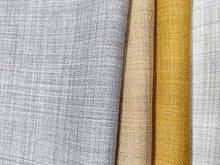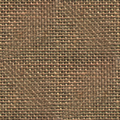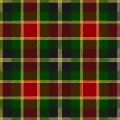
Calico is a heavy plain-woven textile made from unbleached, and often not fully processed, cotton. It may also contain unseparated husk parts. The fabric is far coarser than muslin, but less coarse and thick than canvas or denim. However, it is still very cheap owing to its unfinished and undyed appearance.

Muslin is a cotton fabric of plain weave. It is made in a wide range of weights from delicate sheers to coarse sheeting. It gets its name from the city of Mosul, Iraq, where it was first manufactured.
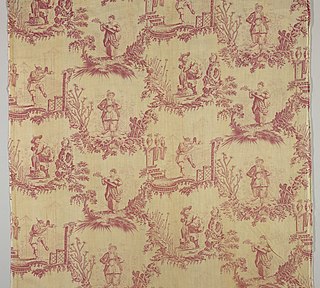
Percale is a closely woven plain-weave fabric often used for bed covers. Percale has a thread count of about 140 or higher and is noticeably tighter than twill or sateen. It has medium weight, is firm and smooth with no gloss, and washes very well. It is made from both carded and combed yarns, and may be woven of various fibers, such as cotton, polyester, or various blends.
Longcloth refers to a plain cotton cloth originally made in comparatively long pieces.
During the Sangam age, industrial activity was considered ancillary to agriculture and was mostly domestic, not factory-based. Simple workshops where the blacksmith made the wheel or the carpenter his wooden wares could be called factories of a sort. Weaving, pearl fishing, smithy and ship building were some of the prominent industries of the ancient Tamil country. Cotton and silk fabrics from Madurai and Urayur were in great demand; the textiles from these regions were well known for their high quality. Korkai was the center of pearl trade and produced pearls that were sought after not only in Tamilakam, but in the kingdoms of north India and Rome. Smithy was an essential industry, because the blacksmith manufactured many of the tools and objects used in daily life. The flourishing overseas trade was supported by the shipbuilding industry that produced a variety of ocean and river craft. There were several ancillary industries such as carpentry, fishing, salt manufacture and construction that supported the trade and economic activity of this age.

A bolt is a piece of cloth woven on a loom or created by a knitting machine, as it is processed, stored and/or marketed. Consequently, its dimensions are highly variable – flexible and dependent upon the manufacturing, machinery, quantity, size, thickness and quality of the product. It is a unit used in manufacturing, transport and inventory. It is also used as a descriptor for wallpaper, which uses different fabrication machinery. Being encompassing, it is by its nature a generic and ambiguous term of convenience and context, used to describe fabric and wallpaper.
The textile industry in India traditionally, after agriculture, is the only industry that has generated huge employment for both skilled and unskilled labour. The textile industry continues to be the second-largest employment generating sector in India. It offers direct employment to over 35 million people in the country. India is the world's second largest exporter of textiles and clothing, and in the fiscal year 2022, the exports stood at US$ 44.4 billion. According to the Ministry of Textiles, the share of textiles in total exports during April–July 2010 was 11.04%. During 2009–2010, the Indian textile industry was pegged at US$55 billion, 64% of which services domestic demand. In 2010, there were 2,500 textile weaving factories and 4,135 textile finishing factories in all of India. According to AT Kearney’s ‘Retail Apparel Index’, India was ranked as the fourth most promising market for apparel retailers in 2009.

Muslin, a cotton fabric of plain weave, was historically hand woven in the areas of Dhaka and Sonargaon in Bangladesh and exported for many centuries. The region forms the eastern part of the historic region of Bengal.
Bafta is a kind of calico, initially made in India.
Khasa was a high-quality variety of calico cloth that was manufactured and used for clothing in the Mughal Empire.
Qutni(cuttanee, couthnys, Koetnies, Kutni) is an old silk and cotton mix cloth with a striped pattern. Qutni is a satin weave structure with silk in warp and cotton in the weft. It was made In Gujarat, India. Qutni was also produced at Damascus, Aleppo, Hama.
Alacha is a lightweight striped cloth made primarily of silk, sometimes cotton, or a mixture of both. The stripe pattern was evident on both sides of the fabric. A typical length of alacha is five yards. It was produced in various parts of India, for example Baikunthpur, Bihar. The cloth was popular in use for female garments such as dupattas (odhni), veils, and petticoats.
Gulbadan was a kind of striped silk produced in Hindustan. The gulbadan was a light textured cloth of silk and cotton. Gulbadan has vertical variegated stripes with a different color than the base color of the cloth. In appearance, it was similar to a glazed calico, unlike Mashru, which has the satin (lustrous) surface.The contemporary silk piece goods were Daryai and Dhupehan. Gulbadan was available in many color combinations and sizes. Gulbadan of Amritsar and Lahore were famous. "Sufi" was another name for Gulbadan striped fabric.
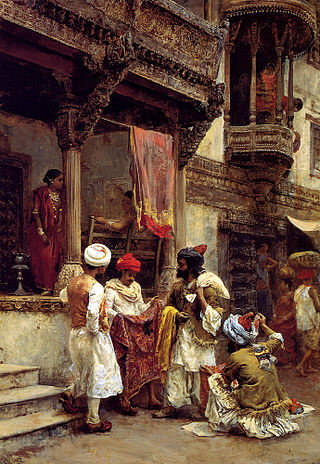
Mashru is a woven cloth that is a blend of silk and cotton. It was historically a hand-woven satin silk fabric variety found in the Indian subcontinent, and its proper use is described in the 16th-century Ain-i-Akbari.
Salampore (salempore) was a kind of cotton cloth produced in India. It had been in use since the 17th century and was exported to Europe and Africa.

Mulboos khas was a special kind of mulmul cloth made for the King and used for Royal clothing in the Mughal Empire. The Mulboos khas was a kind of first-grade muslin exclusively manufactured in Royal Karkhanas notedly in places like Dacca, Sonargaon, Jangalbaree. Nur Jahan, the empress, was a great admirer of Dacca muslins. Mulboos khas was the finest and most expensive type of muslin, and it was used exclusively in Imperial use.

Jhuna was a fine sheer fabric, an open-weave structure similar to gauze. Jhuna was used primarily in the dresses of the dancers. It was another kind of fine muslin produced in Bengal with other peers such as Buddun khas, kumees, Rang.

"Narrow cloth" is cloth of a comparatively narrow width, generally less than a human armspan; precise definitions vary.
Punjum was a type of Indian cotton cloth. It was produced in the Northern Circars, on the Coromandel Coastal region in South East India. Punjum was a kind of cotton longcloth that was produced in a variety of thread counts.
Delaine was a kind of mixed cloth with cotton warp and wool in the weft. Delaines have many variations such as made of undyed yarns, and also printed or piece dyed. Delaine was a type of cloth used to manufacture women's dresses that was traded in the nineteenth century under many names to suit importers and traders. Moreover, it appeared that the plaintiffs' goods differed from delaines in various other respects.
